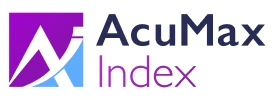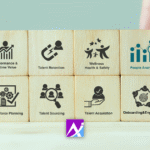Lila Asante Appiah, MATD, PHR, SWP
CHRO/Executive Consultant
Jean, a Finance Director for a large public accounting firm, recently received a resignation letter from Tom, her Sr. Finance Manager. Tom came to the company just over a year ago with nearly 15 years of relevant experience. Jean was impressed with Tom; he had a solid education, interviewed very well and she immediately connected with him during their 45-minute interview meeting. After all the time and effort getting Tom up to speed – Jean was shocked that he’d decided to move on to another company. She really believed that he was loyal to her and therefore, felt both angry and somewhat betrayed. From her perspective, Tom should have shown more professional courtesy by talking to her about his decision, face-to-face. If things weren’t going well, he should have spoken up.
The fact that she had to tell her VP Margaret that, yet another key member of her team was resigning only exacerbated the situation. Tom was the fourth leader to leave her unit in the past eighteen months. What reason could she give this time, she wondered. Jean immediately went through her mental ‘checklist’ to remind herself of the various actions she’d taken to ensure Tom’s success. While she was aware of her tendency to help managers avoid making mistakes, she honestly felt that most of them appreciated her support. Despite the feedback she had received from various sources, Jean was committed to shielding her team and ensuring that they avoided landmines – at all costs. While Jean wanted to gain perspective on her management ‘lens’ and approach, she was hesitant to ask for support for fear of being perceived as weak.
So, let’s talk about Jean’s (not her real name) tendencies and the ensuing downstream impacts. There were several blind spots that Jean was completely unaware of. As well, there were other limitations that she was aware of, but didn’t initially have the courage to seek support and change. I know these weak points well because at one point in my early career, I dealt with a few of them myself. Jean hired me as her coach and together, we discussed her goals and agreed upon what she wanted to work on. After developing a coaching plan, I helped Jean identify and draw out the limiting beliefs that were detracting her from achieving greater success. The outcome was an improvement in her overall effectiveness as a leader.
In this first of a 3-part series, I’ll share the initial blind spot in business that Jean was unaware of: her hiring approach. Knowing how to hire good talent is critical; it can impact whether and/or how quickly a leader progresses through the company.
Jean let her initial raw impressions of Tom influence her hiring decision. I refer to this as a ‘quick fire hire’. This is a common pitfall that many hiring managers make without ever realizing it until after the new hire is aboard. The hiring manager immediately makes an assessment about a candidate within the first 5-10 minutes of the interview. Instead of being cognizant of the early suspicion and leaving room to refine their assessment, the hiring manager proceeds to let the initial impression guide the remainder of the interview. Judging candidates on how well they interview is more times than not a mistake. A savvy articulate and congenial person can be convincing in an interview. Jean fell into this trap. She placed too much emphasis and value on Tom’s interview skills.
I’ll be the first to admit that hiring for potential has value. However, don’t be afraid to pull back the curtain to gain real insight into the candidate’s past behavior and performance. My experience has been that past behavior often dictates future performance. Understanding the situation, what role the candidate played, the ‘why‘ and ‘how‘ behind the approach they took, the outcome(s) and lessons learned are all important. Keep in mind that the context is decisive – so ask the candidate to describe the culture and landscape that he or she was operating within.
Below are three traps to avoid and what you should consider when hiring your next team member.
Don’t – compromise talent for time. This can be difficult to do and requires intentionality. Instead– focus on hiring the best talent – no matter what. It is far too costly to make a bad hire. Before making a hiring decision, don’t hesitate to ask yourself, three questions: ‘If I hire this individual, will I be compromising my hiring standards?’, ‘What will happen if I hire this candidate?’, ‘What will happen if I don’t hire this candidate?’
Don’t – overlook the value of incorporating and leveraging validated personality/human wiring assessments into your hiring and selection process. Instead – remember, the assessment which best aligns with your organization’s goals can provide a critical data point when making a hiring decision. Understanding how an individual is wired offers excellent insight when determining fit for the position, particularly when compared or matched to the critical position characteristics needed for success. In many respects, hiring is part art and part science. Challenge yourself by asking, ‘Am I considering and utilizing all factors and data available to me in making this hiring decision?’
Don’t – forget about the importance of motivation. Instead – assess the candidate’s experience, education and skills against the requirements of the role. However, if you are overlooking how the employee is motivated, what factors drive their behavior and decisions, you are missing key information. Understanding what motivates the candidate and what work environment he/she finds motivating will shed light on potential cultural fit. Ultimately, motivation will impact effort and performance on the job. Before making that final hiring decision, reflect on these questions: ‘Have I explored enough about this candidate and what motivates him/her?’, ‘Can I articulate how this candidate will fit with the team and the organization?’.
Jean learned a valuable lesson as she reflected on this experience: taking the time to get to know more about candidates, how they’re wired, to assess cultural fit, and to identify the important motivators are all key to successful hiring outcomes.
As we continue this series next week, we’ll look at the second shortcoming that Jean focused on during her coaching experience, pre-empting learning failures.
People Optimization Platform
Tailored Solutions
Helpful Resources
Our Company
Unlock your organization’s full potential with the industry’s premier pre-employment and people optimization platform.
- Contact Our Sales Team | (313) 914-5885
- Contact Customer Support | (313) 914-5885
Experience the power of the AcuMax Index firsthand with a FREE assessment and personalized analysis today!
- © AcuMax Index, 2025. All Rights Reserved.





